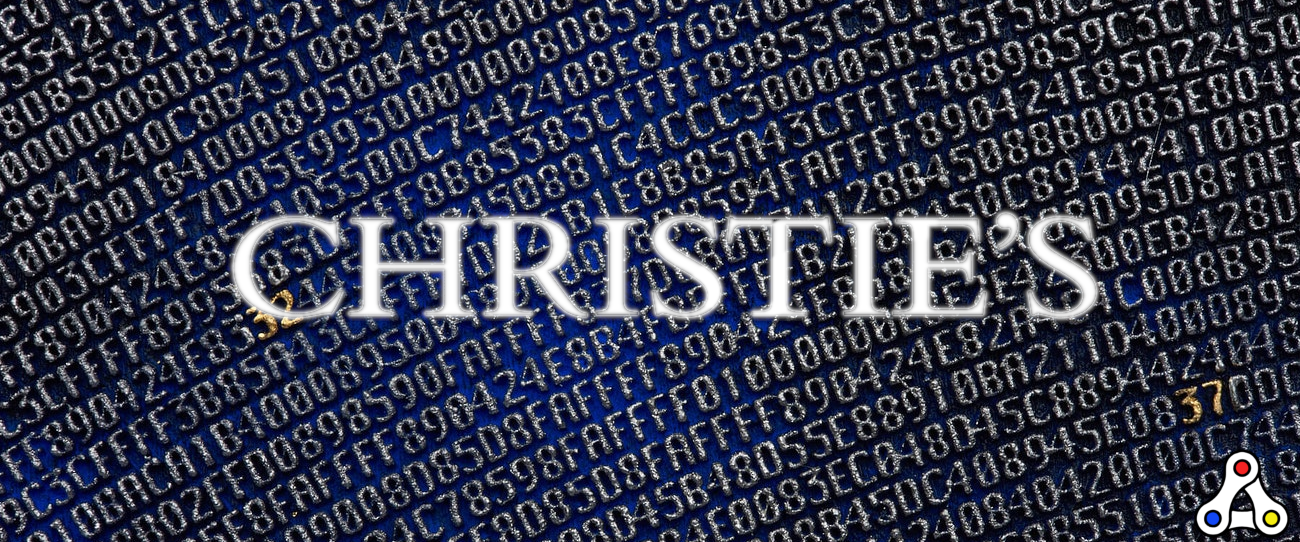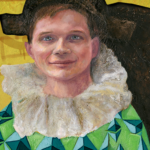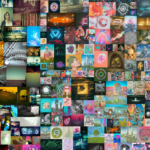Async Art is the blockchain-partner for Christie’s New York upcoming auction of a Bitcoin-inspired artwork called Portraits of a Mind. It will be the first non-fungible token ever sold by the auction house, which was established in 1766. Async Art provides the technology to make the artwork change based on the time of the day.
The creator made Portraits of a Mind into a physical artwork split into 40 pieces. All these combined form the original code of the Bitcoin blockchain. Twenty pieces have been sold to collectors across the world, decentralizing the artistic representation of the Bitcoin blockchain. Block 21 is an exclusive digital art piece that connects to a physical version.
On October 7th this artwork will be auctioned at Christie’s. The digital art piece is programmed to change based on the timezone. Right now it switches to its day mode at 8AM EST and back to night mode at 7PM EST. The owner of the non-fungible token can switch to a different time zone, if needed.
One hundred thousand dollars
Even though this will be the first crypto art for Christie’s, Async Art has been leading the pack since the platform launched earlier this year. In September they sold Matt Kane’s programmable crypto art ‘Right Place & Right Time’ for a record amount of more than 101 thousand dollars. An investor called TokenAngels paid 262 ETH to get his hands on the crypto artwork that consists out of 24 hand-crafted layers. “This is the McLaren of programmable art”, Async Art tweeted in response to the sale.
Alongside the sale of this original work, Matt Kane will periodically mint unique editions based on this work. The royalties of these creations will be shared with the owner, which is TokenAngels. This partnership between the artist and the art collector will remain for the next ten years.
Lots of attention for blockchain technology
The auction of a Bitcoin-inspired artwork has obviously nothing to with market trends, but it sure is a sign. Cryptocurrencies and digital assets are taking a more prominent role every single day. The European Union and the United States are very serious about implementing their own digital currencies. Ultimately cryptocurrencies like Ethereum and Bitcoin will have the hardest money, because there’s a limitation to the amount that there will ever be.
It’s safe to say that the odds are in favor of the blockchain industry, even though there’s still a lot of work to be done. Many people don’t understand the technology and don’t see value in digital assets. At the same time tech savvy investors are pumping thousands and sometimes millions of dollars in blockchain projects. This week investors even made their interest in non-fungible tokens public.
Since June 2020 the market for crypto art slowly started increasing its volume. Data from Nonfungible.com suggests that on June 1st there was 15 thousand dollars of trading volume in the art segment. Now we’re in September and the daily trading volume is fluctuating around 100 thousand dollars.
What is crypto art?
Crypto art or digital art has been around for many years. However, without the existence of blockchain technology it was impossible to verify authenticity and rarity. Now digital art connects directly with an unique token on the Ethereum blockchain. That way buyers can see how many copies of a certain artwork there are, and whether the product is original.
The concept of seeing a digital image as art, is one thing. However, for many people it will be a challenge to consider digital images as valuable. Consider this: The Mona Lisa is worth many millions of dollars. If I would paint the Mona Lisa in an exact copy, it would be worth only 50 dollars. Because we all know where the original version is. Being able to verify the authenticity and rarity of a piece of art is crucial.
Some people don’t care about the Mona Lisa. It’s just a painting. They are happy to download an image for Google Images, print it on canvas and hang it in their living room. Others want the real deal. The same rules go up for digital crypto art. Some people want to original one, others are happy with a copy on their phone.
Crypto art is gaining popularity. Platforms like Rarible, Superrare and Knownorigins are thriving. The introduction of blockchain technology allowed digital artists to create unique artworks. Ownership and rarity are now verifiable through the blockchain, creating true value. Last year the crypto art market was good for 559 thousand dollars in trading volume. The market grew 115 percent compared with the year before.
In addition several artists from ‘outside’ the blockchain space have been showing interest. MakersPlace has already partnered with comic book artist José Delbo, while NiftyGateway sold some original Vandal Gummy artworks. Even Paris Hilton sold a drawing!




